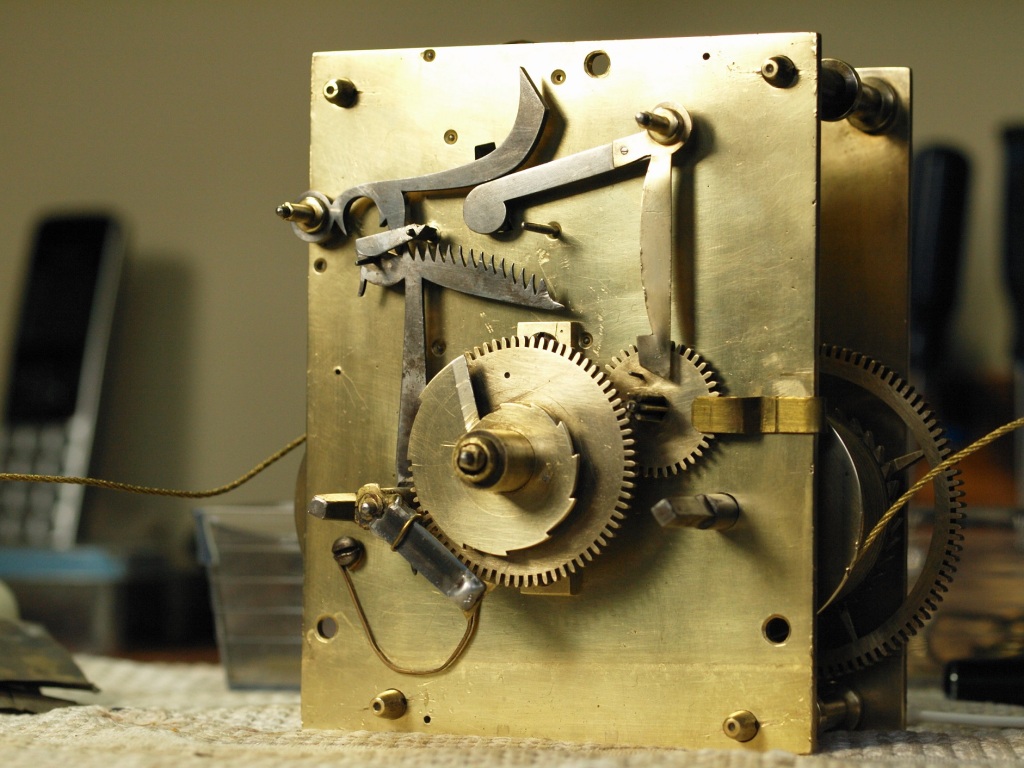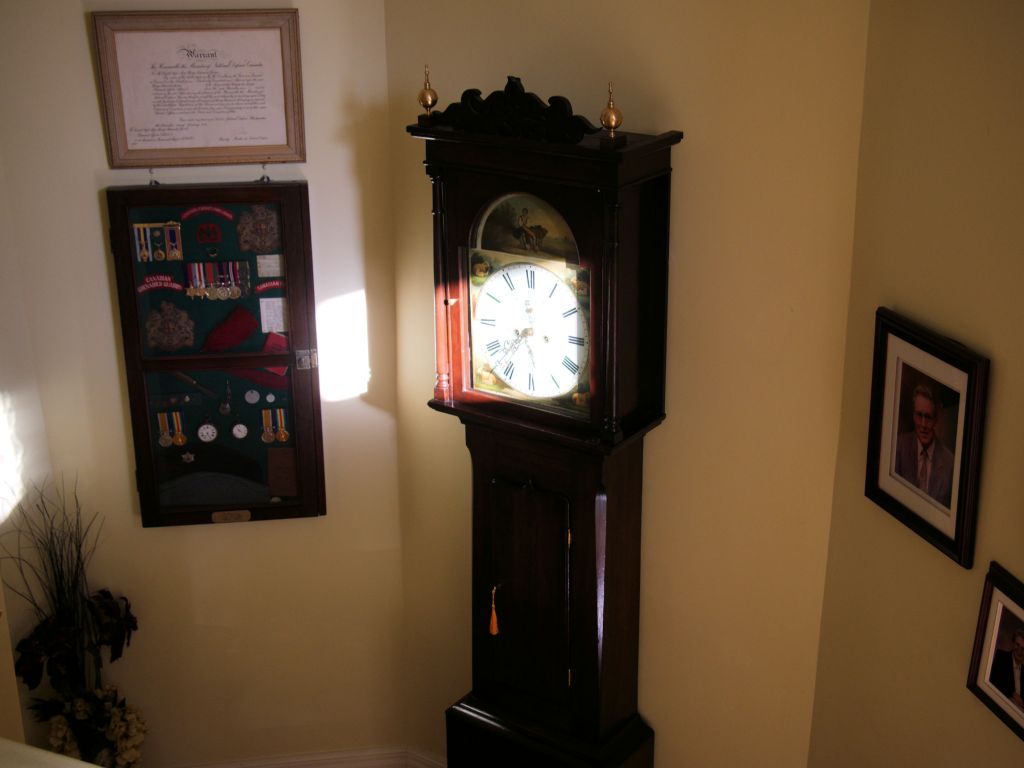From time to time, I enjoy reflecting on the progress of my projects after a certain period.
Five years ago I acquired a Scottish clock at auction, fulfilling my long-held desire to add an antique tall-case clock to my collection. Reflecting on it now, the decision to purchase the clock proved to be a wise one, as it has operated almost flawlessly except for a minor issue which I will detail later in this article.
The clock proudly graces a landing in our home. The location is interesting because it faces six steps that ascend to the upper level of our home. Four years ago, when I shared a photo of it on a clock forum site, someone warned me about the possibility of tripping on the stairs one early morning and colliding with the clock. Although it hasn’t occurred, the thought occasionally crosses my mind.

A description of the clock
It boasts a classic Scottish design dating back to the late 1840s. Its removable bonnet spans 23 inches at its widest point, while the waist measures 15 3/4 inches wide, and the base is 20 inches wide. Tapered columns adorn either side of the bonnet, with the dial access door covering the entire bonnet and swinging to the right. The solid wood access door on the waist measures 9 x 24 inches.
Standing just under 90 inches tall, the clock nearly reaches the height of our 8-foot ceiling so placing it on the landing means there is plenty of clearance above it.
The well-preserved sheet iron white dial features painted spandrels depicting ewes with lambs, and a painted arch top showing a man resting on a rock with two working horses behind him, telling me that it might have been made for a wealthy Scottish sheep farmer.

The cast-iron weights are 10 lbs 11oz and 11 lbs 3oz, with the heavier weight hung on the strike side. The pendulum and rod weigh 2 lbs 6oz, and the sheet iron dial is hefty at 5 lbs 3oz.
Although the movement plates are over 3mm thick, there is no visible maker’s mark. The robust movement, crafted in the Guild style, features an anchor escapement. These movements are commonly known as an “English bell strike”. Common in 19th-century England they were made by craftsmen who were members of guilds, such as The Worshipful Company of Clockmakers which exercised strict control over clock-making within a certain radius.

The clock has a “false plate,” a cast-iron skeleton frame fastened to the front plate of the brass movement, with the dial attached to this frame. Stamped on the plate is “BIRMm,” referring to Birmingham, England, the birthplace of this time and strike movement.
The dial bears the names Wm McLachlan, Newton Stewart. Newton Stewart is a former burgh town in the historical county of Wigtownshire in Dumfries and Galloway, southwest Scotland.
William (Wm) McLachlan, a clock and watchmaker in Newton-Stewart, Wigtownshire, advertised his business for sale on May 25, 1852, as listed in David Whyte’s book, “Clockmakers & Watchmakers of Scotland 1453 to 1900.” That is the extent of my research on Wm McLachlan. Of course, I would love to learn more about this clockmaker.
McLachlan also worked as an assembler, sourcing cases, dials, and movements for his customers according to their preferences. Rather than constructing clocks entirely in his shop, McLachlan purchased necessary parts from various manufacturers, finishing and assembling them before placing his name on the dial. He might have either crafted the cases himself or commissioned craftsmen to provide them as needed. This was a common practice during that era.
Since McLachlan operated a clock business he along with apprentcies/assitants, undoubtedly provided servicing for clocks within the local area.

One curiosity eludes me to this day. Despite featuring a calendar hand on the clock face, there is no functional calendar mechanism integrated with the movement. This suggests two potential scenarios: firstly, that the movement and dial were paired and assembled without a calendar function, or secondly, that the movement itself is a replacement.
All is not perfect
While the clock is reliable and has been an excellent timekeeper it suffers from one small flaw. On day six of the weekly cycle, the clock stops. As the weights descend to the level of the pendulum a harmonic phenomenon occurs. A harmonic phenomenon is defined as “a vibratory body responding to external vibrations to which it has a harmonic likeness”.
When the weights on a tall clock descend to the point where it’s at about the same height as the pendulum, the weights swing slightly. Since the power that drives the pendulum is now swinging the weights as well, the pendulum is robbed of its share of power and eventually stops. While this problem typically doesn’t arise with a new tall case clock, it’s a common issue when a clock ages. Despite a thorough cleaning and servicing of the movement, it’s apparent that some wear still persists.
To minimize sympathetic vibrations, I have secured the upper part of the clock case to the wall behind using a cable and additionally, I have inserted two small sponge blocks between the back of the case and the wall, aligning them with the pendulum bob’s height.
Nevertheless, after months of continuous vibration from the strike side, the sponge blocks slowly descend below the bob’s level, leading to the clock’s aforementioned behaviour. I might have to consider permanently securing the blocks in place with glue, although I am not particularly enthusiastic about this solution.
Despite the minor inconvenience, the clock has proven to be a reliable timekeeper and retains its pristine appearance, just as it did when I completed its restoration in my workshop five years ago.
Will I crash into it someday. I hope not!

<
div dir=”ltr”>A gre
LikeLike
It must give you pleasure every time passing by. Great picture sunlight on the dial. One can only imagine the history witnessed in its nearly two hundred life.
LikeLike